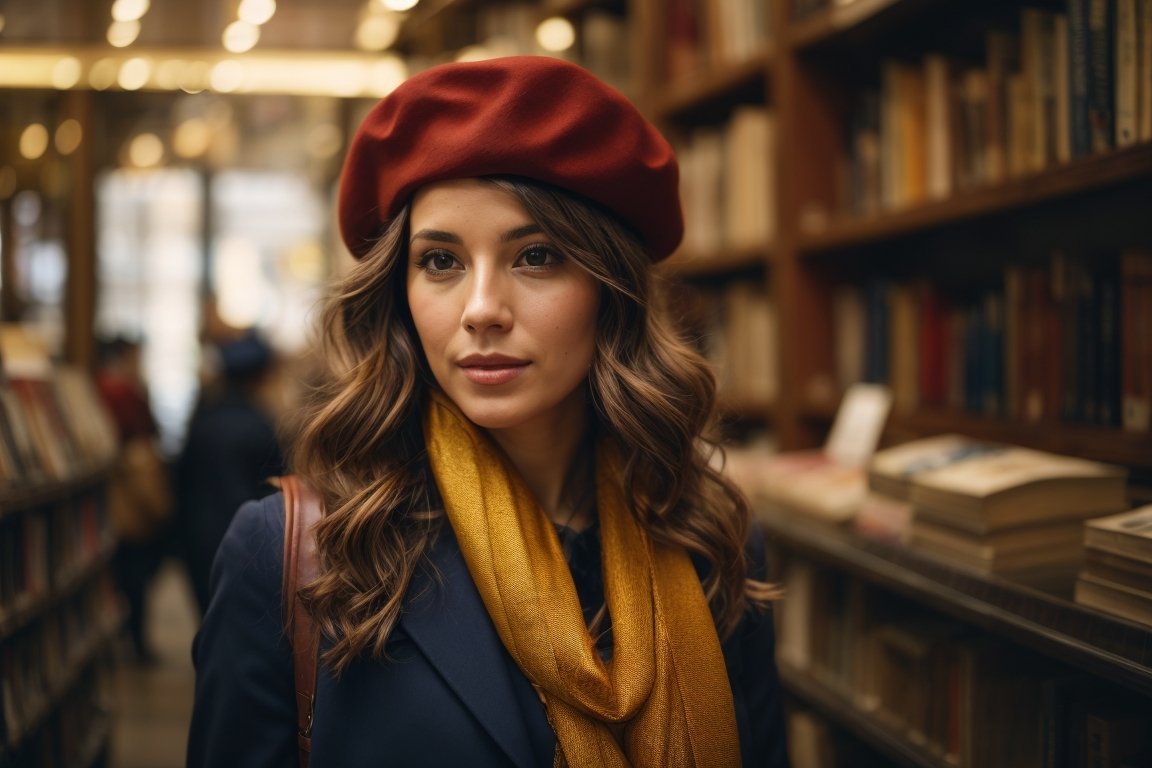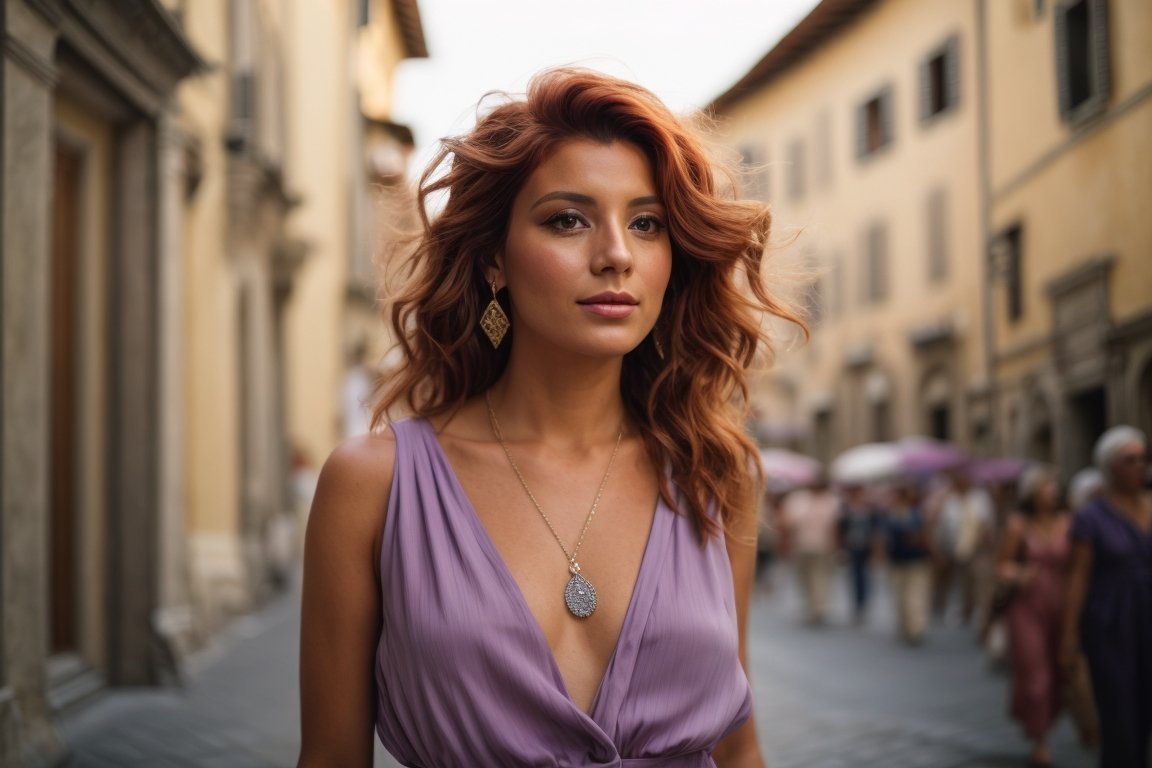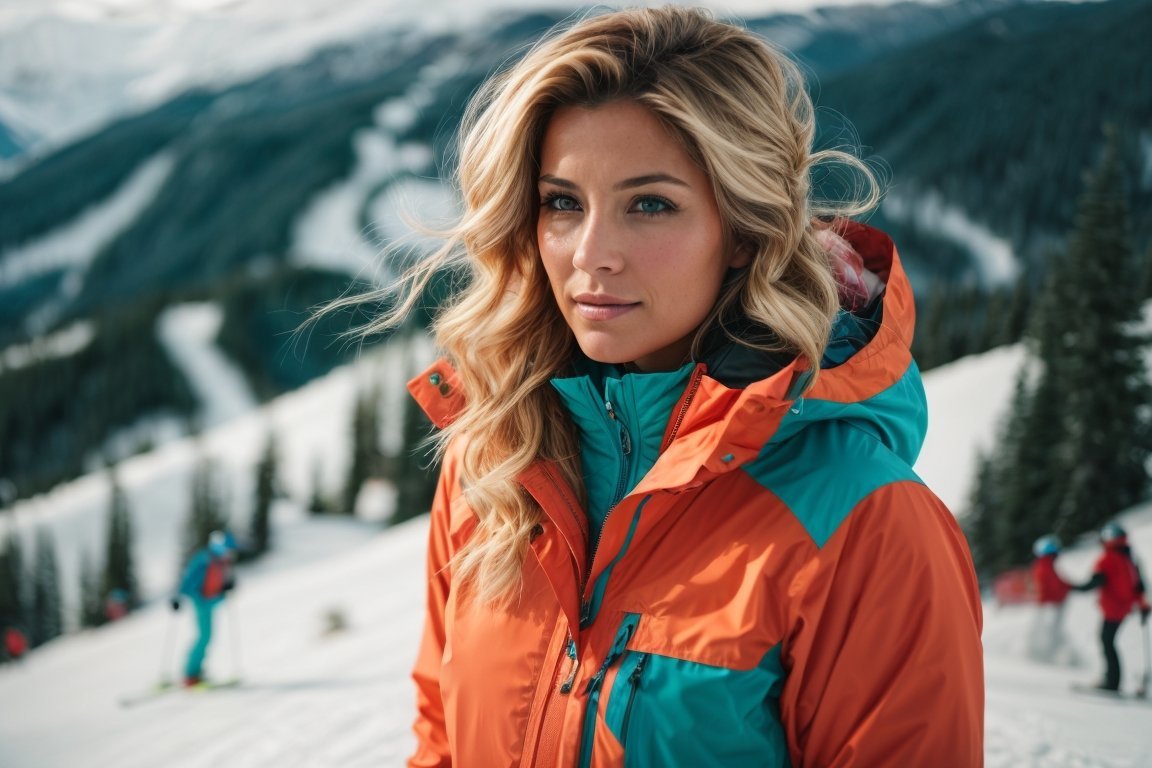Key Takeaways
- Understanding the psychology of color in fashion.
- How to match colors for seasonal dressing.
- The influence of skin tone on your color choices.
- The color trends for Spring, Summer, Autumn, and Winter.
- How to build a color-coordinated wardrobe.
- Popular color combinations for each season.
- Cultural impact on color preferences.
- The do’s and don’ts of experimenting with color.

From high-fashion runways to your neighborhood department store, the colors on display are carefully chosen for a reason. Fashion designers, style experts, and color psychologists dedicate countless hours to analyzing how color choices influence our mood, reflect personality traits, and affect how others perceive us.
In this comprehensive fashion color guide, we explore the impact of color in clothing, covering everything from cool blue tones to bold, fiery reds. Discover the must-know seasonal color trends and learn how to decode the latest popular shades in fashion.
The Psychology of Color in Fashion
Colors aren’t just for visual appeal; they’re deeply linked with our emotions and actions. Let’s discover the hidden language of colors in the fashion context.
Emotional Impact of Colors
Wearing red is often associated with passion and energy, while a calm blue exudes tranquility and peace. Have you ever noticed how you feel invigorated when wearing a yellow top or how a soft lavender blouse makes you feel relaxed? This isn’t mere coincidence; colors have a psychological effect on our mood and can even influence how others perceive us.
Color and First Impressions
First impressions are important, whether you’re going to a job interview or a first date. The colors you wear can say a lot about your personality.
For example, choosing to wear darker colors such as navy or charcoal can project a sense of professionalism and reliability in the workplace, while opting for brighter colors may indicate creativity and openness. Selecting the right clothing colors for business attire helps communicate your personal brand and make a positive impression.
Gender and Color Preferences
Do men and women have different preferences when it comes to color? Studies suggest that while men gravitate toward bolder, more saturated colors, women often prefer softer shades. However, these are just general trends and can differ from person to person.
Seasonal Color Matching
Each season brings its unique color palette inspired by nature and cultural festivities. But how do you make sure you’re wearing the right shades?
Spring Essentials
Spring is synonymous with renewal, making it the perfect season for pastel shades like mint green, peach, and baby blue. These colors not only reflect the blooming environment around you but also help uplift your spirits.
Summer Vibrance
Think bright, bold, and dramatic. Summer is all about expressing yourself with colors like fiery red, electric blue, and sunflower yellow. These shades are not just eye-catching but are perfect for creating a joyful atmosphere.
Autumn Hues
As leaves turn gold and the air becomes crisp, our wardrobe should adjust accordingly. Autumn is the time for warm and earthy tones like burgundy, mustard yellow, and olive green. These shades are not just trendy but are incredibly versatile, making them autumn wardrobe-essentials.

The Role of Skin Tone
Knowing your skin tone isn’t just for picking the right foundation. It’s crucial to select shades that complement your complexion.
Warm, Cool, and Neutral Undertones
Identify your undertone by looking at the veins on your wrist. If they appear blue, you have a cool undertone. If they look more greenish, you have a warm undertone.
If it’s hard to tell, you’re likely neutral. Each undertone works best with specific color ranges. For example, warm undertones look stunning in earth tones, while cool undertones are complemented by jewel tones like sapphire and emerald.
Seasonal Changes in Skin Tone
Our skin tone can change slightly depending on the season. You might find that you’re a bit paler in winter and more tanned in summer. Adjust your wardrobe colors accordingly to harmonize with these subtle shifts in your complexion.
Trend Forecast: Upcoming Color Trends
Fashion is ever-changing, and so are the popular colors of the season. Here’s a quick glimpse into the color trends you should keep an eye out for.
Spring/Summer 2023 Forecast
Expect a lot of pastel and earthy shades, like sage green and sky blue, along with some surprising twists, like neon accents. These shades are perfect for a fresh and youthful look.
Fall/Winter 2023 Forecast
Darker, richer hues will take center stage, with a focus on purples and deep greens. Metallics are also expected to make a comeback, adding a bit of sparkle to the otherwise cozy and subdued winter palette.
Influencers and Color Trends
In today’s digital age, fashion influencers play a significant role in setting trends. Keep an eye on what your favorite fashionistas are wearing and how they’re pairing colors to stay ahead of the curve.
Color Combinations to Try
Don’t be afraid to experiment with color, but a little guidance never hurt anyone. Here are some classic and daring color combinations to consider.
- Red and Pink: A surprisingly chic and modern combo.
- Navy and Gold: Timeless and elegant.
- Orange and Blue: Vibrant and eye-catching.
- Black and Yellow: Bold and impactful.
- Green and Brown: Earthy and relaxed.
- Grey and Lavender: Soft and sophisticated.
- Teal and Coral: Fresh and youthful.
- White and Beige: Clean and minimalist.
How to Build a Color-Coordinated Wardrobe
Building a wardrobe that reflects not just the trends but also your personality can be a daunting task. Here’s how to make it easier.
- Identify Your Go-To Colors: Know the shades that make you feel good and look great.
- Seasonal Essentials: Keep seasonal shades in mind and update your wardrobe accordingly.
- Versatility is Key: Choose colors that can be easily mixed and matched.
- Statement Pieces: Invest in a few eye-catching pieces in unique colors for special occasions.
- Test and Trial: Before going all out, test new colors in smaller items like accessories to see if they suit you.
- Take Risks: Don’t shy away from shades you haven’t tried before.
- Use Color Wheel: A color wheel can be a useful tool to understand contrasting and complementary colors.
- Check Trends: Keep an eye on fashion shows and influencers for the latest color trends.
When Not to Follow the Rules
Yes, fashion has its rules, but remember, they are meant to be broken sometimes. While understanding color theory and seasonal shades can elevate your style, don’t be afraid to go against the grain.
The Art of Clashing
Clashing colors aren’t always a fashion faux pas. Done correctly, they can be incredibly eye-catching and make a bold fashion statement. Take the example of pink and red—once considered a disastrous combo, it’s now touted as a chic and modern pairing.
Cultural Colors
Different cultures have different takes on what colors are considered appropriate or signify specific emotions. While white is commonly worn for weddings in many Western countries, it’s a color of mourning in some Eastern cultures. Be mindful and respectful of these differences, especially when dressing for cultural or religious occasions.
Individual Expression
At the end of the day, fashion is all about self-expression. If you feel fabulous in a particular shade that’s not ‘in’ or supposed to clash with your skin tone, wear it anyway. The key is to wear it with confidence.

The Science Behind Color Psychology
Color isn’t just about what meets the eye; there’s a whole layer of psychology to it. Have you ever wondered why some shades make you feel calm while others seem to energize you? Well, it’s not a mere coincidence. Let’s delve into this captivating world of color psychology.
The Importance of Neutrals
Neutral colors, such as beige, grey, and taupe, have an essential function. They work as the background shade, enhancing brighter and bolder colors. Think of them as the canvas on which vivid colors come to life. Without neutrals, other hues wouldn’t stand out as distinctly.
Warm Colors and Their Effects
Warm colors like red, orange, and yellow have a tendency to evoke emotions ranging from comfort and warmth to hostility and anger. You might want to choose these shades for communal spaces like the living room or dining area where you’d like to foster conversation and interaction.
Cool Colors: A Deep Dive
On the other hand, cool colors like green, blue, and violet tend to relax us. Ever noticed how many bedrooms or bathrooms opt for shades of blue or green? That’s because these hues usually make spaces appear more expansive and airy.
The Fabric Factor
Fabrics also play a vital role in how a color is perceived. The texture and material can either elevate or dull the hue.
Cotton and Linen: The Natural Choice
Natural fabrics like cotton and linen are breathable and typically better for warm weather. They absorb dye well, leading to a more vibrant color output.
Synthetic Fabrics: A Different Dynamic
Synthetic fabrics like polyester may not be as breathable but do offer a unique sheen that could make colors look more vivid in a different way. These are generally good for colder seasons.
Satin and Silk: The Luxurious Edge
Nothing screams luxury like satin and silk. If you’re looking to make a bold statement, a satin red dress or a silk blue scarf could be your go-to choice. The smooth, shiny surface of these fabrics can make colors appear richer and deeper.
Cultural Interpretations of Colors
Colors often have different meanings in various cultures, and it’s crucial to consider this while choosing your seasonal wardrobe.
Red: A Color of Celebration and Danger
In Western cultures, red usually signifies danger or love. However, in countries like China, red is the color of prosperity and joy.
White: Purity or Mourning?
Similarly, white may symbolize purity in some cultures, while in others, it’s worn during times of mourning. Knowing the cultural connotations can save you from potential faux pas.

Wardrobe Planning: Seasonal Vs. Year-Round
Deciding between a seasonal and a year-round wardrobe can be a conundrum. Here’s how you can make the decision easier.
The Perks of a Seasonal Wardrobe
A seasonal wardrobe gives you the freedom to play with trends. It also ensures that you are wearing fabrics suited to the weather, making you more comfortable.
The Flexibility of a Year-Round Wardrobe
A year-round wardrobe, however, offers more flexibility. It consists mainly of classic pieces that can be mixed and matched to create different looks.
Practical Tips for a Colorful Wardrobe
Ready to revamp your wardrobe with this newfound knowledge? Here are some practical tips that can guide you.
- Use neutral colors for staple pieces like trousers and skirts.
- Experiment with patterns but stick to a cohesive color palette.
- Don’t shy away from metallics; they can act as neutrals, too.
- Consider the wash of the fabric. A stonewash look can offer a more casual vibe.
- Keep the occasion in mind. Brighter shades may be more suitable for daytime, while deeper hues could be more appropriate for the evening.
- Remember to factor in your skin tone and what colors make you feel confident.
- Don’t forget about accessories. A pop of color through a scarf or a bag can elevate your entire look.
- Play with textures. Sometimes, the fabric can change the whole mood of the color.
- Always consider the season. Some colors naturally suit certain times of the year more than others.
The Trendsetter’s Guide to Color
Fashion trends are ever-changing, but some rules stay constant. Knowing the ins and outs of what’s currently in style can make you the trendsetter of your circle.
Pantone Color of the Year: The Forecasting Tool
Every year, the Pantone Color Institute selects a “Color of the Year,” which influences fashion, interior design, and even marketing trends. Keeping an eye on this can give you a head start on what colors to include in your seasonal wardrobe.
Fashion Week: The Designer’s Palette
Another way to stay ahead is to follow the major fashion weeks like Paris, Milan, and New York. Designers showcase their latest collections, setting the tone for what’s going to be in trend for the next season.
Social Media: The Modern-day Trendsetter
Platforms like Instagram and Pinterest are also excellent places to look for fashion inspiration. Influencers and fashion bloggers often have a keen eye for what’s trending, and following them can give you some great ideas for your own wardrobe.

Unlocking the Power of Accessories
Never underestimate the power of a good accessory. Even the most basic outfit can be transformed with the right belt, bag, or piece of jewelry.
Belts: More Than Just Functional
Belts can be a great way to add a splash of color to a monochrome outfit. For instance, a red belt can break up an all-black ensemble and add a touch of elegance or boldness, depending on the shade and texture.
Handbags and Clutches: The Ultimate Statement Piece
Your choice of handbag can also say a lot about your fashion sensibility. A bright-colored clutch can make you the life of the party, while a more neutral tote can be perfect for a day at the office.
Jewelry: The Final Touch
Jewelry can not only complement but also contrast with your outfit. Imagine wearing a turquoise necklace with a coral dress; the colors can pop without clashing, creating a harmonious look that’s sure to turn heads.
Your Personal Style: The Final Frontier
At the end of the day, what matters most is that you feel comfortable and confident in what you’re wearing. Fashion is a form of self-expression, and the colors you choose are a big part of that.
Knowing Your Color Wheel
Understanding the color wheel can help you determine which colors complement each other. This knowledge allows you to make bolder choices with a higher chance of them working well together.
Fashion is Individualistic
There’s no one-size-fits-all approach when it comes to fashion and color. Your choices should ultimately reflect who you are and how you feel. That’s the beauty of fashion; it’s an art form that is deeply personal yet universally understood.
Comfort Over Trends
While it’s fun to play around with trends, never compromise on comfort. If you’re not comfortable in what you’re wearing, it will show. Choose fabrics, fits, and colors that make you feel good. After all, when you feel good, you look good.
Conclusion
Understanding the nuances of color in fashion isn’t just about following trends; it’s about making conscious choices that reflect your personality, mood, and the setting you’re in.
From the psychological impacts of warm and cool colors to the importance of fabric type, each aspect offers a different dimension to how your final look will be perceived.
As you begin to understand these subtleties, you’ll find that your wardrobe becomes not just a collection of clothes but a curated gallery of art pieces that are a true reflection of you.
Summary Table
| Aspect | Key Points |
|---|---|
| Color Psychology | Warm colors energize; cool colors calm. |
| Fabric Types | Cotton and linen for summer, synthetics for winter. |
| Cultural Context | Color meanings can vary between cultures. |
| Seasonal Wardrobe | Trend-focused, suited for specific weather. |
| Year-Round Wardrobe | Versatile, classic pieces that mix and match. |
| Accessories | Can make or break an outfit. |
| Personal Style | Your ultimate guide for choosing colors. |
Frequently Asked Questions
What are the best colors to wear for a job interview?
Neutral colors like black, navy, and grey are usually the safest options for job interviews. They convey professionalism and are less distracting.
Is it okay to mix patterns in an outfit?
Absolutely, as long as the colors complement each other and the patterns are not too overwhelming when paired together.
How do I choose the right fabric for a particular season?
Lightweight, breathable fabrics like cotton and linen are ideal for warm weather. For colder seasons, heavier fabrics like wool and synthetic blends are better.

How do I know which colors look best on me?
This often depends on your skin’s undertone. Cool undertones generally look best in blues and purples, while warm undertones favor earthy tones like reds, yellows, and oranges.
Can accessories really change an outfit?
Yes, accessories can either accentuate or detract from your outfit, so choose wisely. For example, a statement necklace can elevate a simple dress.
What is the Pantone Color of the Year, and why does it matter?
The Pantone Color of the Year is a color chosen annually by the Pantone Color Institute. It influences various design sectors, including fashion, and keeping tabs on it can help you stay ahead in style.
How do cultural interpretations of color affect fashion choices?
In different cultures, the same color can have varying meanings. Being aware of this can help you make more informed choices, especially when dressing for multicultural settings.
Is it essential to have both a seasonal and year-round wardrobe?
Not necessarily. Some people find it easier to maintain a versatile year-round wardrobe, while others enjoy the variety that a seasonal wardrobe offers.
What role does color psychology play in fashion?
Color psychology can influence our moods and perceptions. For example, wearing red can make you feel confident, while blues and greens are often calming.
How do I balance staying trendy with maintaining my personal style?
The key is to incorporate trends in a way that complements your existing wardrobe and personal style. You don’t have to adopt every trend; pick what resonates with you and adapt it in a way that makes you feel comfortable and confident.

Anna West, the visionary behind Clothes Color Guide, is our go-to for all things fashion. Merging the finest of runway trends with everyday style, she demystifies the world of color and pattern. While clothing is her mainstay, Anna also shares insights on interior design, pet care, and relationship advice. Dive into her articles and emerge with a vibrant perspective on style and life.
Reviewed By: Joanna Perez and Marcella Raskin
Edited By: Lenny Terra
Fact Checked By: Sam Goldman
Photos Taken or Curated By: Matthew Mansour
